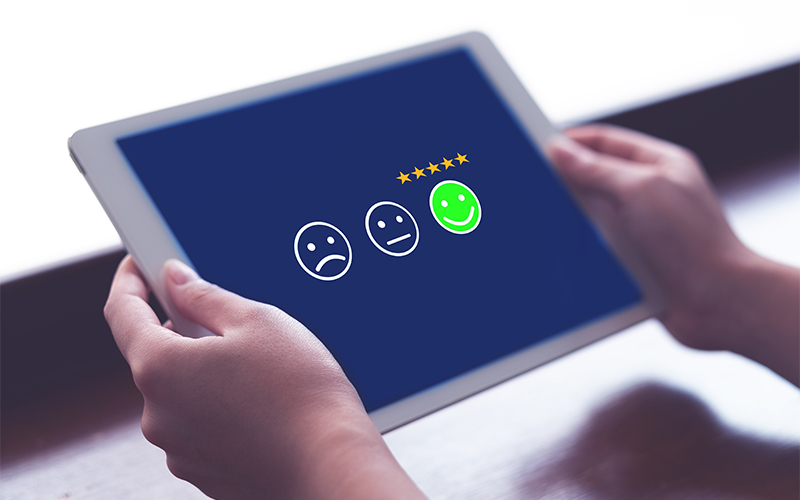Personalisation in B2B (business-to-business) interactions has emerged as a crucial element for fostering strong and enduring relationships. While personalisation has long been recognised for its ability to enhance customer experiences and drive sales in B2C, its significance in the B2B landscape is equally profound, if not more so. Research shows that about 72% of B2B customers expect personalised content when selecting products and services. However, organisations seeking B2B partners struggle to define an audience-centric view of the customer lifecycle.
Businesses must initiate a conversation and dwell upon implementing personalised B2B marketing tactics. Meaningful and personalised interactions demonstrate your commitment towards the client and show how mutual goals align.
Let’s explore the benefits of personalising experience in B2B and ways to achieve it.
Benefits of personalising customer experience in B2B
Businesses are increasingly turning to personalised approaches to stand out. B2B is a long-tail process that involves nurturing leads and understanding their long-term needs. Here are several benefits of personalising customer experience in B2B –
- Tailored marketing efforts result in long-term connections. By tailoring your interactions, communications, and offerings to address specific pain points or goals, you showcase a genuine commitment to their success. This improves satisfaction levels and builds trust, credibility, and loyalty.
- Personalised marketing messages capture attention, resonate with the needs of a B2B customer, and stand out from a range of generic emails. Whether it’s customising email content, offering personalised product recommendations, or providing tailored solutions, personalisation increases the relevance of your communications, making them more compelling.
- The cost of acquiring a customer is high. However, customers feel heard, understood, and valued when they receive personalised communication, thereby fostering loyalty and encouraging repeat business.
- Tailormade solutions increase cross-selling and upselling opportunities. Additionally, personalisation enables businesses to map and adapt to a buyer’s journey more effectively, delivering the right message at the right time to the right person. This contributes directly to the company’s bottom line by driving a higher customer lifetime value (CLV).
However, a business must leverage data, adopt technology, and create compelling strategies to achieve these benefits. For example, an e-commerce business that shares personalised recommendations based on a customer’s previous purchase history is an excellent example of B2B personalisation.
Ways to achieve B2B personalisation
B2B personalisation requires more than just good intentions - it must be a strategic process with functional models that help the marketing team communicate effectively with the client. Some of the ways to achieve B2B personalisation are as follows –
Understand the persona
Accurate and detailed customer profiling and persona building give you a framework to build your communication strategy. A persona not only details the customer’s needs but also their unsaid and underlying expectations from a vendor.
For example, a customer may have an unsaid expectation that the vendor proactively researches and recommends newer products according to the market demand, helping them move into untapped markets.
You can start by analysing existing B2B clients and creating their personas with distinct concerns and priorities.
Personalise email communication
With their inboxes full of generic emails that they never open, personalised emails capture the attention of B2B partners. However, personalisation is not just limited to adding their name in the subject line and salutation. The email must contain sufficient information to demonstrate that you have done your homework before reaching them.
Automation tools with artificial intelligence (AI) can bring this customisation to scale. For example, if you are selling cloud storage space, you may want to talk about the problems that the customer is currently facing before offering a solution.
Account-based marketing
Account-based marketing (ABM) segments customers into accounts based on their value, demands, and expectations. This approach is great for leads that have long buying cycles and pay attention to detail.
ABM utilises a specialist team to research a customer and reach a specific person with a solution to their existing problem. Usually, this person is the decision-maker who makes the critical buying decision.
Do not sell a product; deliver value
Rather than focusing on selling the product or service, emphasise the problem you are solving for the client. If the client perceives that the product delivers more value than its cost, selling is a natural outcome.
For example, a business manufacturing packaged ready-to-eat meals can add value to its product by highlighting the nutritional component. A potential B2B buyer sees it as a solution to two of their end customer’s problems – lack of time to cook and the need to fulfil daily nutritional requirements.
Define metrics to measure personalisation performance and return
One must measure the effectiveness of short-term and long-term personalised communication by studying the interactions against specific metrics. Businesses can measure profile growth, audience engagement, and influence on conversion to understand the customer’s perceived value of the interaction.
For example, a consistently high rating on interactions with the sales team indicates a high potential for a sale, and a higher quantity of orders Y-o-Y indicates long-term loyalty.
How can Infosys BPM help?
Infosys BPM analytics services leverage the power of data, technology, and domain expertise to improve B2B personalisation outcomes across business units. Focusing on business metrics that add to the profitability and top line unlocks the true value of the enterprise. Explore our offerings.








